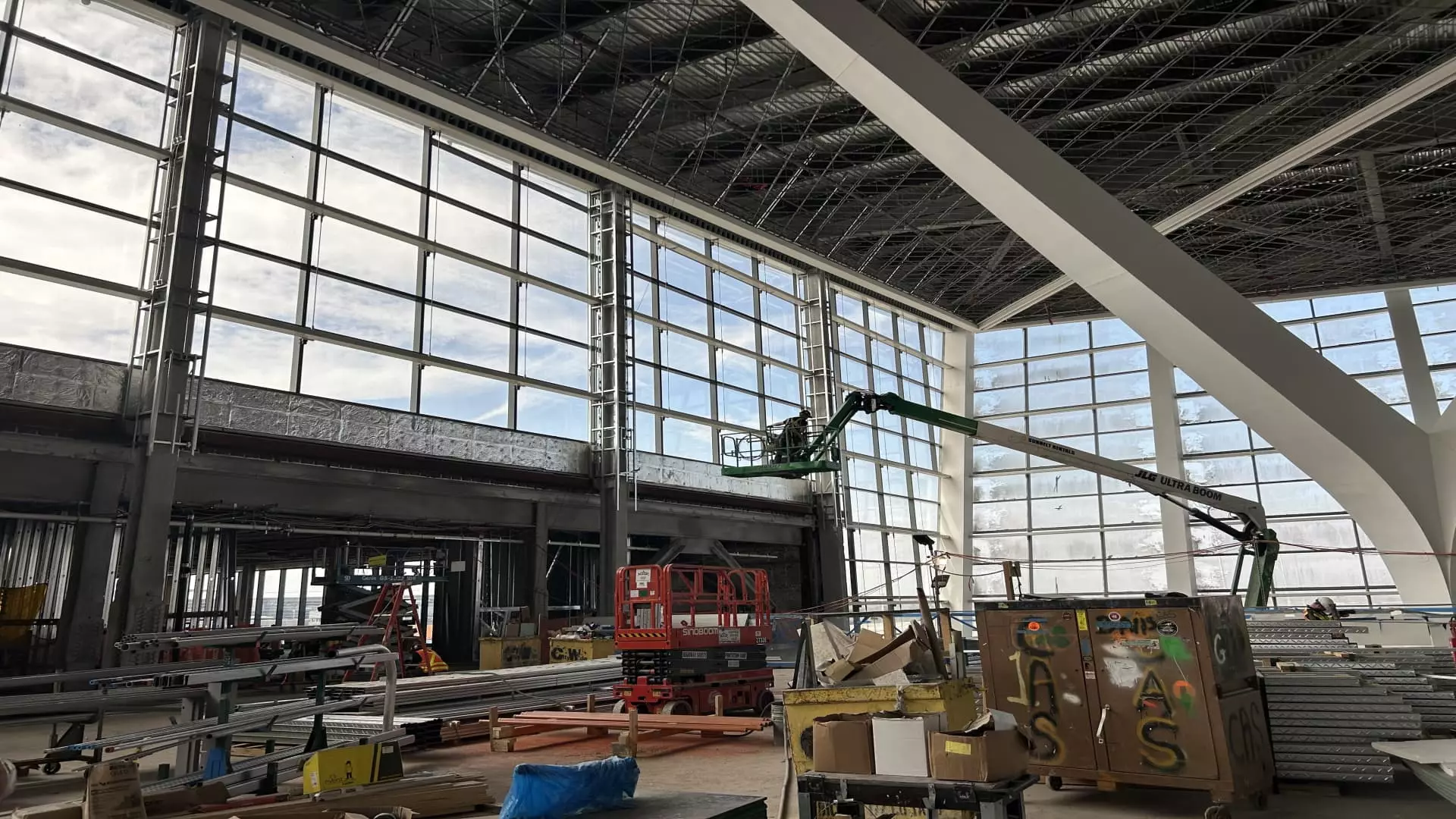John F. Kennedy International Airport’s newest $9.5 billion Terminal 1 signifies more than just an upgrade; it embodies a pivotal assertion of America’s desire to reclaim its stature as a global hub. Yet, beneath its shiny surface lies a complex interplay of ambition, infrastructure challenges, and economic considerations. The project, though ambitious, invites scrutiny into whether such an investment genuinely addresses gaps in functionality or merely bolsters the city’s image at the expense of practicality and fiscal responsibility.
The terminal’s design demonstrates an optimistic vision: a lightweight, airy space bathed in natural light, promising a seamless, luxurious experience for international travelers. This approach, led by renowned architects Gensler, aims to create an aesthetic that hints at sophistication and modernity—perhaps an aspirational statement more than a necessity. While the focus on the visual appeal and passenger comfort is undeniably important, critics might argue that Charade of innovation is not a substitute for core operational efficiency and scalability. Is a more stylish terminal immune to the complexities of managing enormous international flows, or does it risk prioritizing form over function?
Furthermore, the strategic decision to dedicate this terminal solely to international flights seems poised to elevate JFK’s profile on the world stage. Nevertheless, this decision comes with inherent risks. Concentrating international traffic into a single facility puts immense pressure on the infrastructure to cope with evolving security, customs, and logistical demands—all of which are notoriously unpredictable. Will the new terminal preemptively solve these issues, or will it merely shift bottlenecks elsewhere until subsequent phases are completed?
Economic Investments or Political Showcases? The Reality Behind the Billions
While the headlines trumpet the $9.5 billion figure as a sign of progress, the larger picture reveals a staggering $19 billion overhaul financed by the Port Authority. This magnitude of investment raises questions about fiscal management and prioritization. Are these funds being allocated efficiently, or are they a reflection of entrenched political ambitions to demonstrate leadership and economic clout rather than genuine operational necessity?
Compared to LaGuardia’s $8 billion revamp, JFK’s expansion dwarfs its sibling in scale and scope—yet the larger investment does not inherently guarantee proportional returns. Critics could argue that airports are more than just status symbols; their true value lies in their capacity to facilitate commerce and tourism without excessive delays or inconveniences. If such infrastructure projects do not fundamentally enhance operational efficiency or significantly increase capacity in the long term, they risk becoming white elephants—immense expenses for minimal tangible benefit.
Moreover, the project’s timeline is targeted to align with the 2026 World Cup, an event whose impact is uncertain in the long run. This proximity suggests a possible prioritization of short-term international visibility over sustainable growth. Does this timing reflect genuine strategic planning or an opportunistic move to capitalize on global attention? If the latter, it underscores a tendency to invest heavily in spectacle rather than substance.
Operational Challenges and Future Uncertainties
The focus on creating a “flood of light” and an intuitive passenger flow indicates a commendable effort to improve customer experience. However, the practical aspects of managing an airport of this scale often reveal stark realities: delays, congestion, and unforeseen logistical hurdles that no aesthetic or architectural innovation can fully mitigate. The inclusion of 14 initial gates capable of handling large aircraft points to an understanding of current demand, but the project’s phased approach—eventually expanding to 23 gates—leaves some uncertainty about whether demand projections are overly optimistic.
Additionally, the infrastructure’s integration with existing transit systems, including the AirTrain and surrounding roadways, is crucial. The project’s success hinges on smooth connectivity; history suggests that such large-scale infrastructure updates often face delays and hiccups, especially when traffic and local urban dynamics are involved. Will the anticipated improvements truly alleviate congestion or merely shift the bottleneck from one area to another?
The conversion of JFK into a more passenger-centric hub is desirable, yet the true test lies in operational resilience. How well can the new terminal adapt to fluctuating international travel patterns, security challenges, and economic downturns? The underlying assumption appears to be that a more glamorous, expansive terminal will automatically translate into enhanced performance. This is a naive perspective. Effective management, streamlined procedures, and adaptive infrastructure are equally critical—none of which are assured by construction excellence alone.
Is This a Necessary Evolution or an Overreach?
In the quest for a world-class icon, JFK’s Terminal 1 promises a future that potentially elevates the city’s standing but also exemplifies the risks of overreach. For liberals holding center-right inclinations, the emphasis on strategic investment in infrastructure that fosters international connectivity resonates as a vital requirement for economic vitality and global influence. However, this must be balanced with pragmatic governance—avoiding the trap of spending vast sums for symbolic victories that do little to address underlying operational issues or long-term sustainability.
The underlying strength of JFK’s planned overhaul is rooted in its perceived ability to meet future demands, yet it is equally vulnerable to issues of cost overruns, implementation delays, and shifting political priorities. Elevating the airport to new heights of luxury and capacity requires more than aesthetic appeal: it demands a rigorous focus on operational excellence and fiscal discipline. For the project to truly succeed, it cannot afford to become a vanity project that dazzles in headlines but falters in daily operations.
Turning JFK into a symbol of American resilience and global connectivity is a worthy aspiration—if and only if the grand investment sustains meaningful improvements, not just a fleeting sense of progress. In the fierce competition among international hubs, practicality must triumph over spectacle, lest the visionary becomes the misguided.

